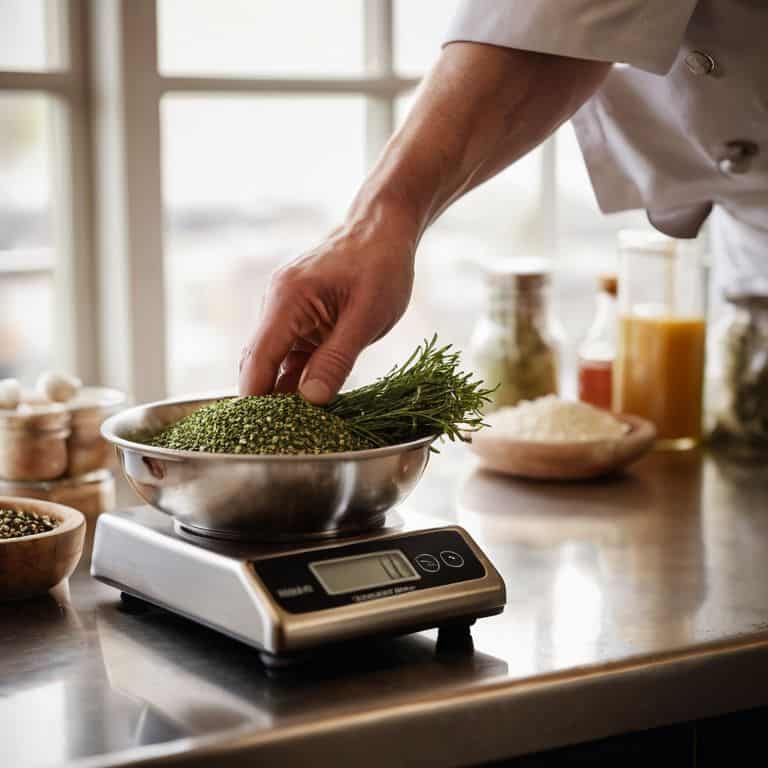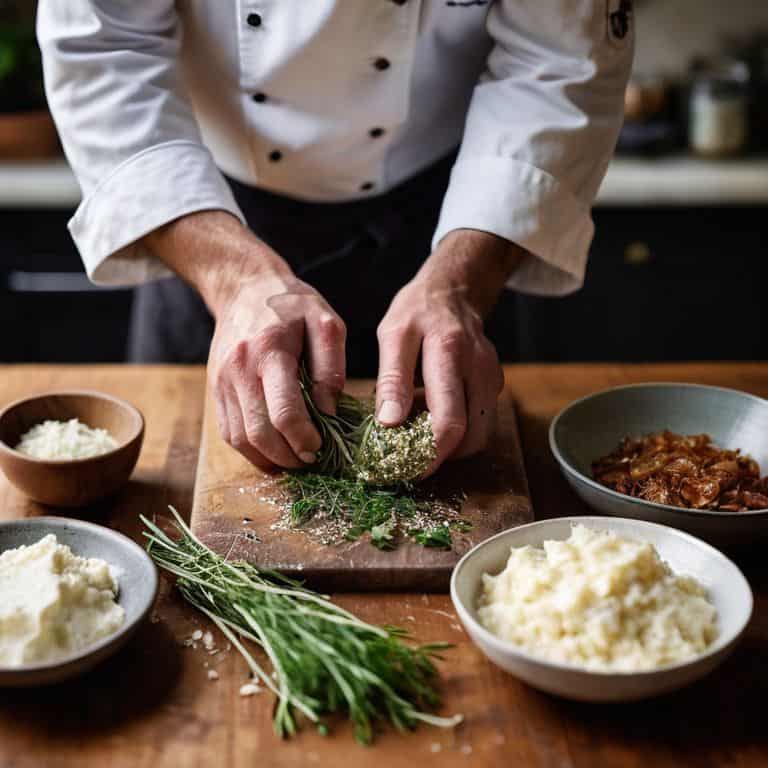As I sit here, reflecting on my years as a bush pilot and now a flight instructor, I’m reminded of the importance of balance in all aspects of life. You see, when it comes to how to balance flavors in a dish, many people think it’s about following a complex recipe or using exotic ingredients. But I’m here to tell you that’s just not true. The key to balancing flavors is actually quite simple, and it’s a principle that can be applied to many areas of life, much like navigating through turbulent skies. I’ve found that understanding how to balance flavors in a dish is essential for any aspiring chef or home cook, and it’s a skill that can be learned with practice and patience.
In this article, I’ll share my no-nonsense approach to how to balance flavors in a dish. You’ll learn how to identify the key elements of flavor and how to balance them in a way that will elevate your cooking to new heights. I’ll provide you with practical tips and techniques that you can apply to any recipe, and I’ll show you how to think like a chef when it comes to balancing flavors. By the end of this guide, you’ll have a solid understanding of how to balance flavors in a dish and be well on your way to creating delicious, well-balanced meals that will impress your friends and family. So, let’s get started and take to the skies of culinary excellence together!
Table of Contents
Guide Overview: What You'll Need

Total Time: 30 minutes to 1 hour
Estimated Cost: $0 – $10
Difficulty Level: Easy
Tools Required
- Taste buds for tasting and adjusting
- Measuring spoons for measuring ingredients
- Salt and pepper shakers for seasoning
Supplies & Materials
- Acidic ingredients such as lemon juice or vinegar
- Sweet ingredients such as sugar or honey
- Salty ingredients such as soy sauce or fish sauce
- Umami ingredients such as mushrooms or miso paste
- Fresh herbs such as basil or cilantro for added flavor
Step-by-Step Instructions
- 1. First, let’s start by understanding the fundamentals of flavor balancing. Just like navigating through a flight plan, we need to consider the different elements that will affect the overall taste of our dish. This includes the ingredients, their quantities, and how they interact with each other. Think of it as plotting a course through a culinary map, where each ingredient is a checkpoint that needs to be balanced with the others.
- 2. Next, we need to identify the flavor profile we’re aiming for. Are we looking for something sweet and savory, or perhaps something spicy and tangy? This will help us determine the types of ingredients we’ll need to use and in what proportions. It’s like filing a flight plan, where we need to specify our destination and the route we’ll take to get there.
- 3. Now, let’s talk about the five basic tastes: sweet, sour, salty, bitter, and umami. Each of these tastes plays a crucial role in balancing the flavors in our dish. We need to consider how each ingredient will contribute to these tastes and make adjustments accordingly. For example, if a dish is too sweet, we might add a sour ingredient to balance it out, just like how a pilot might adjust their altitude to avoid turbulence.
- 4. The next step is to layer the flavors in our dish. This means adding ingredients in a specific order to create a harmonious balance of tastes. We might start with a base flavor, such as a sauce or a broth, and then add other ingredients to build upon it. This is similar to how a pilot builds up their flight plan, adding waypoints and checkpoints along the way to ensure a smooth journey.
- 5. As we add each ingredient, we need to taste and adjust regularly. This is like monitoring our flight instruments, making sure we’re on course and making adjustments as needed. We might find that a dish needs a bit more salt or a squeeze of lemon juice to bring out the flavors. By tasting and adjusting as we go, we can ensure that our dish stays on track and arrives at its destination – the perfect balance of flavors.
- 6. Another important consideration is the texture and mouthfeel of our dish. Just as a pilot needs to consider the terrain and weather conditions, we need to think about how the different ingredients will interact with each other in terms of texture and mouthfeel. For example, we might add some crunchy elements, such as nuts or seeds, to balance out soft or smooth ingredients.
- 7. Finally, let’s not forget the importance of restraint when it comes to balancing flavors. Just as a pilot needs to know when to push the throttle and when to hold back, we need to know when to add more ingredients and when to stop. Too many ingredients can overwhelm the dish, just like how too much fuel can weigh down an aircraft. By being mindful of our ingredients and their quantities, we can create a dish that is balanced, harmonious, and truly delicious.
Balancing Flavors in Dishes

As we delve into the world of flavor balancing, it’s essential to understand the concept of flavor profiling techniques. This involves identifying the dominant flavors in a dish and adjusting them to create a harmonious balance. Balancing sweet and sour flavors is a crucial aspect of this process, as it can make or break the overall taste of a dish. By carefully considering the interplay between these flavors, we can create a truly exceptional culinary experience.
When it comes to savory dishes, seasoning strategies play a vital role in achieving flavor balance. This is where umami flavor enhancement methods come into play, adding depth and richness to the dish. By incorporating ingredients like mushrooms, soy sauce, or miso paste, we can elevate the flavor profile and create a more complex taste experience. The key is to strike a balance between these flavors, avoiding overpowering the other ingredients.
To take our flavor balancing to the next level, let’s consider the role of acidity in flavor balance. A squeeze of fresh lemon juice or a splash of vinegar can work wonders in cutting through richness and adding brightness to a dish. By understanding the flavor wheel, we can better navigate the relationships between different flavors and make informed decisions about how to balance them. This knowledge will serve as our guide, helping us to create dishes that are truly greater than the sum of their parts.
Navigating Flavor Profiling Techniques
When it comes to navigating flavor profiling techniques, I like to think of it as plotting a course through unfamiliar airspace. You need to understand the terrain, or in this case, the flavor profiles of your ingredients. Just as a pilot uses checkpoints to stay on course, you can use the basic flavor categories – sweet, sour, salty, and umami – to guide your seasoning. By considering how each ingredient contributes to the overall flavor profile, you can make adjustments to achieve a balanced taste.
As you practice flavor profiling, you’ll develop a sense of how different ingredients interact with each other, much like a pilot learns to read the weather and adjust their flight plan accordingly. This skill will allow you to make intentional decisions about the flavors in your dish, rather than relying on guesswork or habit. By taking a thoughtful, step-by-step approach to flavor profiling, you’ll be well on your way to creating dishes that are truly greater than the sum of their parts.
Understanding Umami Enhancement Methods
When it comes to umami, I like to think of it as the “cruise altitude” of flavors – it’s where all the elements come together to create a rich, savory taste. To enhance umami, consider adding ingredients like mushrooms, soy sauce, or fish sauce to your dish. These ingredients are like the navigational aids of the culinary world, helping to guide the flavor profile to new heights. By incorporating them in a thoughtful, step-by-step manner, you can create a truly balanced flavor experience.
Think of umami enhancement as a gradual climb to the perfect flavor altitude. Start by adding small amounts of umami-rich ingredients and adjusting to taste, just as you would fine-tune your aircraft’s altitude to reach optimal cruising height. This approach will help you avoid overloading the dish with too much of a good thing, ensuring a smooth, enjoyable flavor journey for all who partake.
Plotting the Perfect Course: 5 Tips to Balance Flavors in Your Dish
- Start by understanding the four primary flavor profiles: sweet, salty, sour, and umami, and how they interact with each other in your dish
- Use the ‘flight plan’ approach to layer flavors, beginning with aromatics and building to the final seasoning, just as a pilot follows a pre-flight checklist
- Balance contrasting flavors, like sweet and sour, to create a harmonious taste experience, much like navigating through turbulent air requires smooth and calculated movements
- Consider the concept of ‘cruise altitude’ in flavor balancing, where you find the optimal level of each flavor component, avoiding overpowering the dish with too much of any one ingredient
- Practice ‘weathering the storm’ of flavor experiments, being open to trying new combinations and adjusting your approach as needed, just as a pilot adapts to changing weather conditions
Key Takeaways for Balancing Flavors
Understanding the fundamental flavor profiles – sweet, sour, salty, bitter, and umami – is crucial for creating dishes with balanced flavors, much like how a pilot must understand the fundamental principles of flight to navigate safely
Applying various flavor profiling techniques and umami enhancement methods can significantly elevate the taste of a dish, similar to how adjusting the pitch and yaw of an aircraft ensures a smooth flight
By approaching flavor balancing with a methodical and patient mindset, akin to a pre-flight checklist, home cooks and professional chefs can consistently create harmonious and delicious dishes that delight the palate
The Art of Flavor Balance
Just as a steady hand on the controls is crucial for a smooth flight, a thoughtful balance of flavors is key to a dish that truly soars – it’s all about making deliberate decisions, one ingredient at a time, to create a culinary journey that’s both harmonious and exciting.
Daniel Sato
Landing Safely: A Balanced Culinary Journey

As we conclude our step-by-step guide on balancing flavors in a dish, it’s essential to remember that the key to success lies in understanding the fundamentals of flavor profiling. We’ve navigated through various techniques, including umami enhancement methods, to help you create a harmonious balance of tastes. By applying these principles and practicing your skills, you’ll become more confident in the kitchen, able to adjust and combine ingredients with ease. Whether you’re a seasoned chef or a culinary newbie, the art of balancing flavors is a skill that can be mastered with patience and dedication.
As you embark on your own culinary journey, remember that the sky’s the limit, and the world of flavors is yours to explore. Don’t be afraid to experiment and try new things – after all, every great dish starts with a bold idea. With the right mindset and a solid understanding of the basics, you’ll be well on your way to creating mouth-watering masterpieces that will leave your friends and family in awe. So go ahead, take to the skies, and let your culinary creativity soar!
Frequently Asked Questions
What are some common mistakes to avoid when trying to balance flavors in a dish?
When balancing flavors, I see students make the same mistakes I used to make as a bush pilot navigating unpredictable weather – overcorrecting. They add too much of one ingredient, then overcompensate with another, throwing the whole dish off balance. Remember, small adjustments, just like minor course corrections in flight, can make all the difference.
How can I determine the right balance of salty, sweet, sour, and umami flavors for a specific recipe?
Think of balancing flavors like navigating through turbulence – you need to make adjustments on the fly. Start by identifying the dominant flavor in your recipe, then tweak the other elements to create harmony. Ask yourself, ‘What’s the salty-to-sweet ratio?’ or ‘Is the sourness balanced by a touch of sweetness?’ Make small adjustments, taste, and adjust again, just like making incremental course corrections in flight.
Are there any universal flavor profiling techniques that can be applied to different types of cuisine?
You know, just like navigating through different airspace, flavor profiling techniques can be universally applied. I recommend starting with the basics: salty, sweet, sour, and umami. Understand how these elements interact, and you’ll be well on your way to creating balanced flavors in any dish, regardless of the cuisine. It’s all about finding that sweet spot, just like leveling off at cruising altitude.
